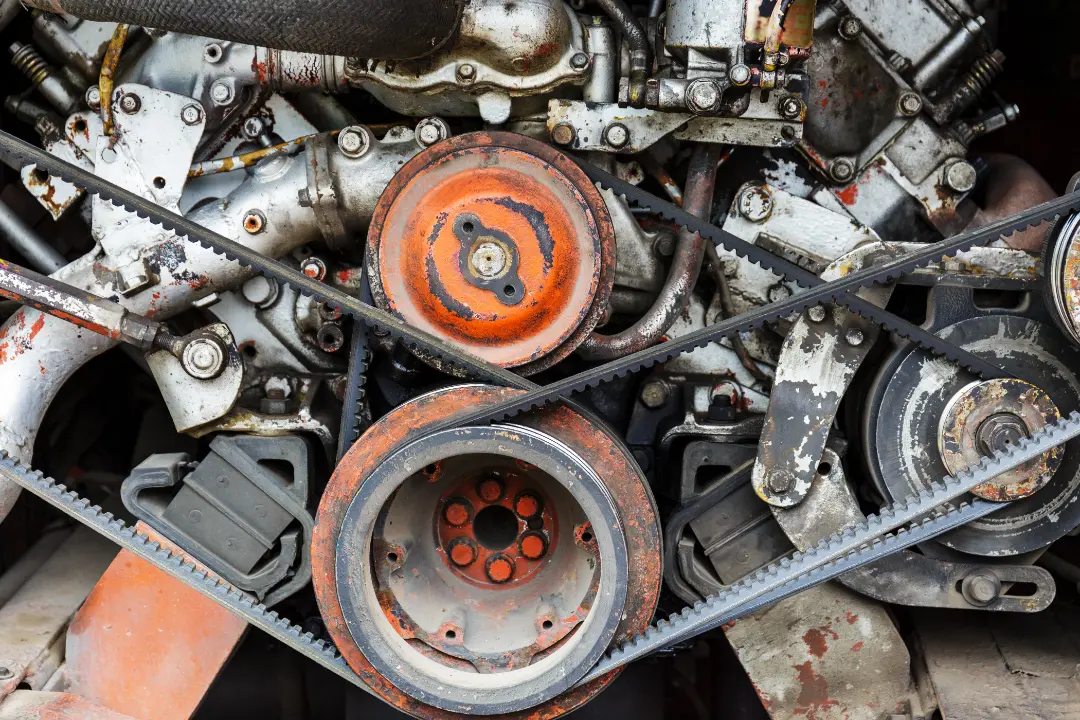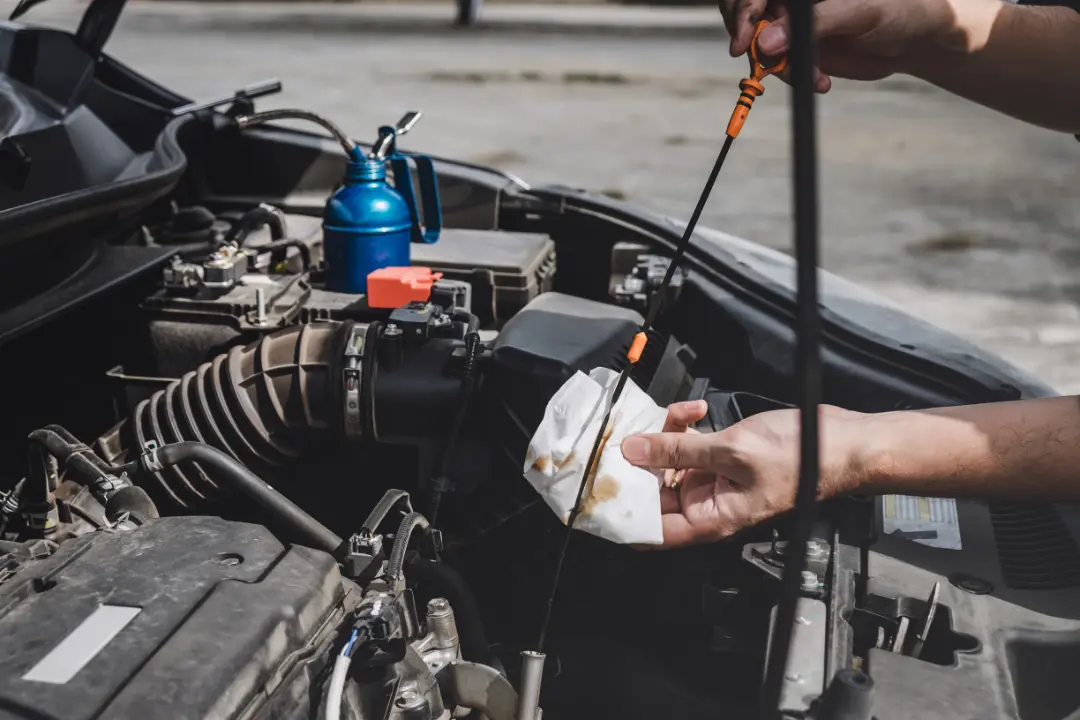If you’re asking, ‘How many miles do tyres last? The answer typically ranges from 30,000 to 60,000 miles. While several factors can extend or shorten this range, you’ll learn about those variables in this article and tips to get the most mileage out of your tyres.
Key Takeaways
- Tyre lifespan ranges from 30,000 to 60,000 miles, influenced by driving habits and position. Front tyres generally wear out faster due to the stress of steering.
- Proper maintenance is essential for prolonging tyre life. This includes maintaining correct tyre pressure, alignment, and balancing. It also involves recognising and addressing visible signs of wear, such as tread depth and cracks.
- Choosing the right tyres for a vehicle is critical. They depend on size, load index, speed rating, and driving conditions. Winter tyres offer improved performance in cold weather and potentially extend overall longevity.
Understanding Tyre Lifespan: Mileage Matters
Tyres are like your vehicle’s shoes – they hit the road running and bear the brunt of every journey. Like a well-worn pair of shoes, tyres also have a lifespan, typically 3 to 5 years, covering 30,000 to 60,000 miles. However, not all tyres wear out at the same rate. New vehicle tyres can potentially last up to 50,000 miles. Does that mean we should all rush out and buy new vehicles? Not quite. The lifespan of tyres is influenced by many factors, including their position on the vehicle.
Front tyres, bearing the burden of steering, usually wear out faster than their counterparts at the rear. They tend to last around 20,000 miles before they need replacing. On the other hand, rear tyres, which experience less stress from steering, typically have a longer lifespan, with an expected mileage of around 40,000 miles. But don’t rush to conclude that the rear tyres have it easy.
The story gets more intriguing once we factor in your driving habits.
The Distance Factor for Front Tyres
Front tyres on vehicles, including car tyres, are like the unsung heroes of the automotive world. They take on more than their fair share of the load, especially in a front wheel drive vehicle. That’s because they must handle both the power transmission and the steering. As a result, front tyres typically last up to 20,000 miles.
Think of your front tyres as the lead dancers in a ballet, while the rear wheel drive plays a supporting role. They determine the direction, handle the intricate moves, and set the pace. The more complex and demanding the performance (or driving conditions, in this case), the quicker their grand finale approaches.
So, the next time you’re behind the wheel, remember the hard work your front tyres put in and consider how your driving habits might affect their performance.
Rear Tyres Endurance
Now, let’s turn our attention to the rear tyres. These guys play a supporting role, following the lead of the front tyres. As a result, they endure less stress from steering and typically last around 40,000 miles.
However, don’t be fooled into thinking they have an easy job. They play a crucial role in maintaining the stability and balance of your vehicle. So, while they might not be in the limelight, they are equally important and deserve your attention.
The Impact of Driving Habits on Tyre Mileage
When it comes to the lifespan of your tyres, your driving habits can either be a friend or a foe. It’s a bit like a fitness routine; how you exercise can either enhance your health or lead to unnecessary strain and injury. Similarly, your driving style can significantly impact how long your tyres last.
Aggressive driving behaviours, particularly abrupt braking and rapid acceleration, contribute to faster tread wear and diminished tyre life. On the other hand, practising smooth driving techniques, including gentle braking and controlled cornering, can markedly increase the lifespan of your tyres. So, by avoiding driving on a flat tyre and refraining from skidding or peeling out, you can prevent unnecessary stress and physical damage to your tyres, thus extending their usable life.
The Role of Proper Maintenance in Tyre Longevity
Now that we’ve looked at the lifespan of tyres and the factors that can impact it, let’s shift gears and focus on the role of proper maintenance. Just as regular health check-ups can extend your lifespan, the same is true for your tyres. Regular care and attention can go a long way in extending tyre life.
Maintaining the correct tyre pressure is crucial as under-inflated tyres increase rolling resistance and lead to higher fuel consumption, indirectly affecting tyre longevity. But tyre pressure is just one piece of the puzzle. Let’s dive deeper into tyre maintenance and explore how keeping pressure in check and ensuring proper alignment and balance can help extend your tyres’ lifespan.
Keeping Pressure in Check
Maintaining the correct tyre pressure is key to extending the lifespan of tyres. Think of your tyres as balloons: Too little air, and they sag; too much air might burst. Either way, it leads to uneven tyre wear, poor handling, and reduced fuel efficiency. Regularly monitoring tyre pressure, particularly when temperatures drop or during seasonal changes, is crucial to maintaining optimal tyre inflation and minimising wear.
But what about the spare tyre, you ask? It’s not just the tyres on the road that need your attention. Your spare tyre, waiting patiently in the trunk, must also be maintained at the right pressure levels, especially before embarking on longer journeys. Remember, the correct tyre pressure for a vehicle can be found in the owner’s manual or on a sticker typically located inside the driver’s door.
So, before hitting the road, check your tyre pressure, including the spare!
Alignment and Balance: Keys to Even Wear
Proper wheel alignment is like a good posture for your vehicle. It ensures that the wheels are perpendicular to the road and parallel to each other, reducing tyre wear and enhancing vehicle handling. Misalignment, such as inappropriate camber, caster, and toe angles, can lead to uneven tyre wear and should be corrected promptly.
Another critical aspect of tyre maintenance is wheel balancing. It optimises the weight distribution around the tyre and wheel assembly, minimising vibrations for a smoother ride and longer tyre life. Regular wheel balancing, which involves adding weights to the tyre rim, is essential for maintaining uniform tyre wear.
Remember, expert services from AVS ensure that wheel alignment and balancing are performed correctly, which is crucial for tyre longevity.
Selecting the Right Tyres for Your Vehicle
Selecting the right tyres for your vehicle is like choosing the right pair of shoes. It depends on various factors, such as the type of surface you’ll be walking (or driving) on, the weather conditions, and the fit. Consider road surface, weather conditions, and vehicle specifications to ensure optimal tyre life when choosing tyres.
At AVS, we offer a guide that helps customers choose tyres best suited for their vehicle, which is essential to tyre longevity. Our expert technicians provide advice on the following:
- Tyre size
- Fitment
- Tread type
- Speed ratings
- Load Capacity
This guidance contributes to better tyre performance and lifespan, especially when using the same tyres consistently.
Factors Influencing Tyre Choice
Choosing the right tyres can be overwhelming with the myriad options available. But don’t worry, we’re here to help. When choosing tyres, consider the following factors:
- Tyre size, including width, side profile, and diameter, must correspond to the vehicle’s wheel and design specifications to ensure proper fit and function.
- A tyre’s load index indicates its maximum carrying capacity.
- The speed rating should align with the vehicle’s capacity for safe and optimal performance.
Your driving habits and environmental conditions also influence tyre selection. Consider tyres with higher load ratings if you frequently carry heavy loads or tow. Of course, your tyre selection should balance safety features, performance requirements, and budgetary considerations.
Expensive Tyres vs Budget-Friendly Options
Deciding between expensive and budget-friendly tyres is often a tricky decision. High-quality, more expensive tyres enhance safety and vehicle performance, potentially influencing tread life. However, they might not always be the best option for everyone.
A tyre’s fuel efficiency rating affects the overall cost of driving and should be considered when comparing tyre options. Also, consider your mileage, driving routes, and maintenance habits to determine if expensive tyres offer a cost-effective solution.
At AVS, we provide a range of tyre options, including premium, mid-range, and budget tyres, to suit different needs and budgets.
Recognising Signs of Tyre Wear
Recognising signs of tyre wear, such as diminishing tread, is crucial for your safety and vehicle performance. Tyres should ideally be replaced when the tread depth gets below 3mm and must certainly be replaced before it gets below 2mm. Think of it as the hairline on your head—once it starts receding, it’s time to take action!
Beyond tread depth, other tyre wear indicators include uneven wear, uneven tread wear patterns, sidewall damage, and experiencing vibrations, all of which can signal the need for tyre replacement. Like a doctor checking for disease symptoms, knowing how to recognise these signs can go a long way in ensuring your safety on the road.
Tread Depth Check: Beyond the Legal Limit
The tread depth of your tyres plays a crucial role in safe driving and stopping distances. Tyres with a tread depth below 1.6mm are not just worn out; they’re illegal and can result in fines and penalty points.
The penny test is a simple way to check if your tyres meet the legal tread depth. If the top of Lincoln’s head is visible when inserted into the tread, the tyre is at or below 2/32 inches and should be replaced.
Visual Inspection: Cracks and Bulges
Aside from tread depth, it’s equally important to look for other visible signs of tyre wear. Tyres should be inspected regularly, as they can start to show signs of cracking after five years. Deep cracks in tyres and sidewall bulges are significant signs of wear, possibly exposing steel belts or body cords, indicating an urgent need for replacement.
So, before you hit the road, make sure to give your tyres a good visual check.
How All Vehicle Services Can Help Extend Your Tyres’ Life
At All Vehicle Services (AVS), we offer a comprehensive range of tyre maintenance services, including:
- Repairs
- Replacements
- Balancing
- Rotations
Our technicians have over 50 years of combined industry experience. They provide professional advice and work closely with top manufacturers to ensure tyre longevity.
From providing competitive pricing and the convenience of free quotes to easy booking and prompt service, we aim to make your experience with us as seamless and beneficial as possible. Let’s examine how our expert advice and comprehensive services can help extend your tyres’ life.
Expert Advice from AVS Technicians
Our technicians at AVS come with a wealth of experience and provide personalised recommendations for optimal tyre care and maintenance. They’re like your personal tyre consultants, offering advice based on your unique driving habits and vehicle specifications.
So, whether you’re unsure about maintaining the correct tyre pressure or need help with wheel alignment, our technicians are here to guide you every step of the way.
Comprehensive Tyre Services at AVS
At AVS, we offer extensive tyre services to cater to your every need. That includes:
- Tyre fitting services with the aid of current equipment and technology
- An extensive range of tyre options, including premium, mid-range, and budget tyres
- Same-day fitting services for added convenience.
We also recommend rotating your tyres every 3,000 to 5,000 miles to ensure even wear and help prolong their life. We offer specialised, vehicle-specific services for tyre repairs and replacements.
When to Consider a Spare Tyre Replacement
Your spare tyre is like your backup plan, waiting patiently in your boot for its moment of glory. But just like the other tyres on your vehicle, the spare wheel must also be in good condition. After all, there’s no point in having a backup plan if it’s unreliable.
Using old or worn tyres can lead to hazardous driving situations, so ensure your spare tyre is in good condition and ready to step in when needed.
Winter Tyres: A Seasonal Consideration for Tyre Longevity
As the seasons change, so do your tyre needs. Winter tyres are specifically designed with a softer rubber compound that remains flexible in cold temperatures. Their tread features deeper grooves and sipes to improve grip and enhance braking performance on snow and ice. You can identify them by the M+S (mud and snow) label and the three-peak mountain symbol, indicating their suitability for use in winter conditions.
By switching to winter tyres during colder months, you can:
- Reduce the wear on your regular tyres
- Effectively distribute the annual mileage across two sets of tyres
- Extend the life of both your regular and winter tyres
So, when the mercury drops, consider swapping your regular tyres for winter ones. It’s an investment that can pay off in the long run.
Summary
In this journey through the world of tyres, we’ve explored how understanding tyre lifespan, selecting the right tyres, recognising signs of wear, and practising proper maintenance can help extend the life of your tyres. Whether it’s maintaining the correct tyre pressure, rotating your tyres regularly, or switching to winter tyres in colder months, every little bit helps maximise tread life. We at AVS are committed to helping you navigate the tyre maintenance landscape, offering expert advice and comprehensive services. So remember, the road to tyre longevity begins with you and ends with your tyres. Happy driving!
Frequently Asked Questions
How long do tyres typically last?
Tyres typically last 3 to 5 years and can cover 30,000 to 60,000 miles. Therefore, regularly checking and replacing old tyres to ensure road safety is important.
What happens if my tyres are under-inflated?
Under-inflated tyres can increase fuel consumption due to increased rolling resistance, ultimately impacting longevity.
How can I check the tread depth of my tyres?
You can check the tread depth of your tyres by using the penny test. If the top of Lincoln’s head is visible when inserted into the tread, the tyre is at or below 2/32 inches and needs to be replaced.
What services does AVS offer to help extend tyre life?
AVS offers a range of tyre maintenance services, including repairs, replacements, balancing, and rotations, to help extend the life of your tyres. They also provide personalised advice based on your driving habits and vehicle specifications.
Should I replace my regular tyres with winter tyres during colder months?
Yes, replacing regular tyres with winter tyres during colder months can reduce wear on your regular tyres and extend their life, along with the winter tyres.


